- Bahasa Indonesia
- Slovenščina
- Science & Tech
- Russian Kitchen

Nicholas II’s family yachts (PHOTOS)
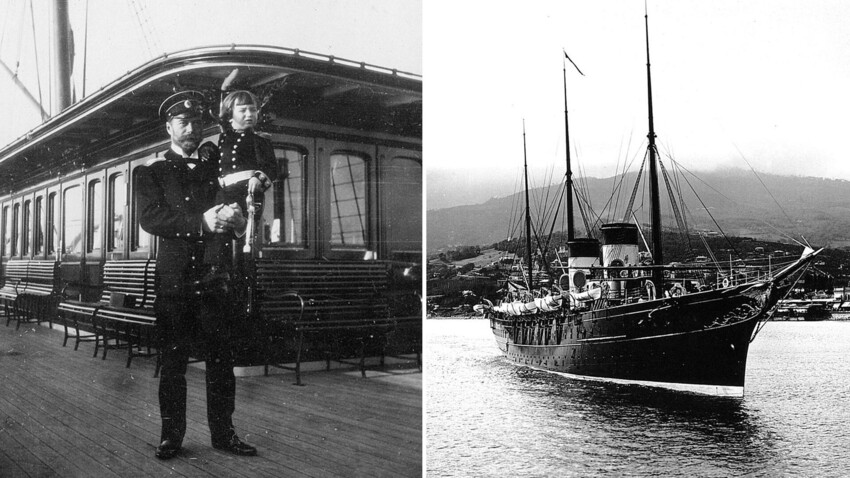
The last Russian emperor is often considered one of the richest people in history. His worth was estimated at $250-300 billion, if we go by what the ruble was worth in 2010. A multitude of factors must be considered when speaking of the Royal family’s ‘bank account’ ( not all is straightforward there ), but what we know for sure is that living expenses left a massive dent in the Russian Empire’s treasury. In 1894-1914, the family had the largest yacht flotilla of all monarchs on the planet. These floating castles were formally owned by the maritime department, but, in practice, belonged to the Romanov family and built to its specifications.
‘Standart’
In 1892, the maritime department ordered a Danish shipyard to build a cruiser, but Alexander III soon ordered to turn it into a yacht. It was already during Nicholas II that the yacht was finally lowered into water, using ‘Standart’ - a traditional name for a tsar’s vessel (the first yacht of this name saw the light of day during Peter I’s reign, almost 200 years earlier).
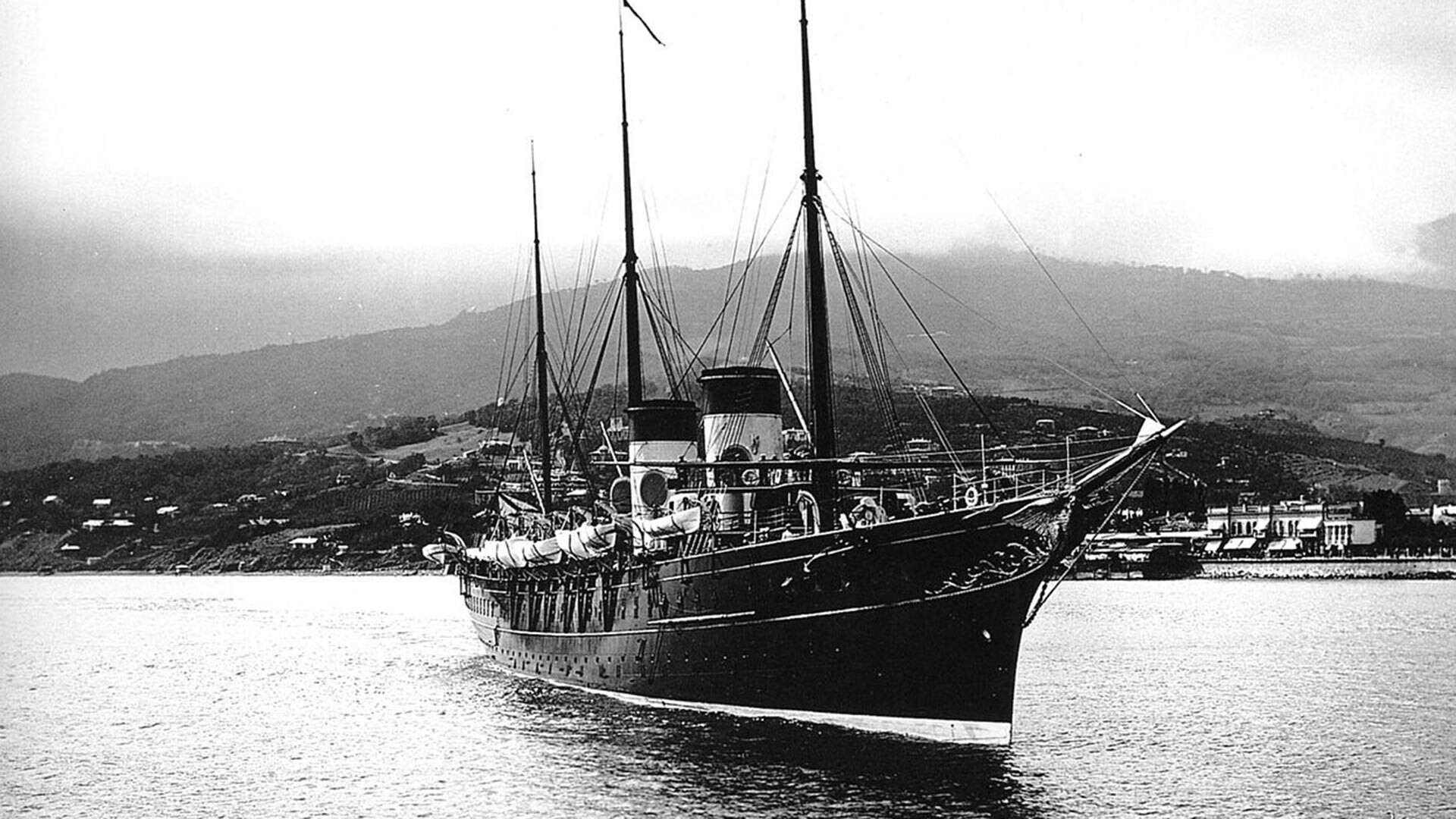
Imperial Russian yacht Shtandart (1893–1961), off the coast of the Crimea, near Yalta, in 1898.
The cruiser yacht, meanwhile, was humongous: measuring 128 meters, it had a crew of almost 400! The Standart was the largest and most luxurious emperor’s yacht in the world, boasting a conference room, an exquisite dining hall for official visits, separate living room, ensuite amenities for every guest cabin and so on. The interior was fashioned with expensive wood and matched the Winter Palace in luxuriousness: crystal chandeliers, candelabras, velvet portiers and other bells and whistles.
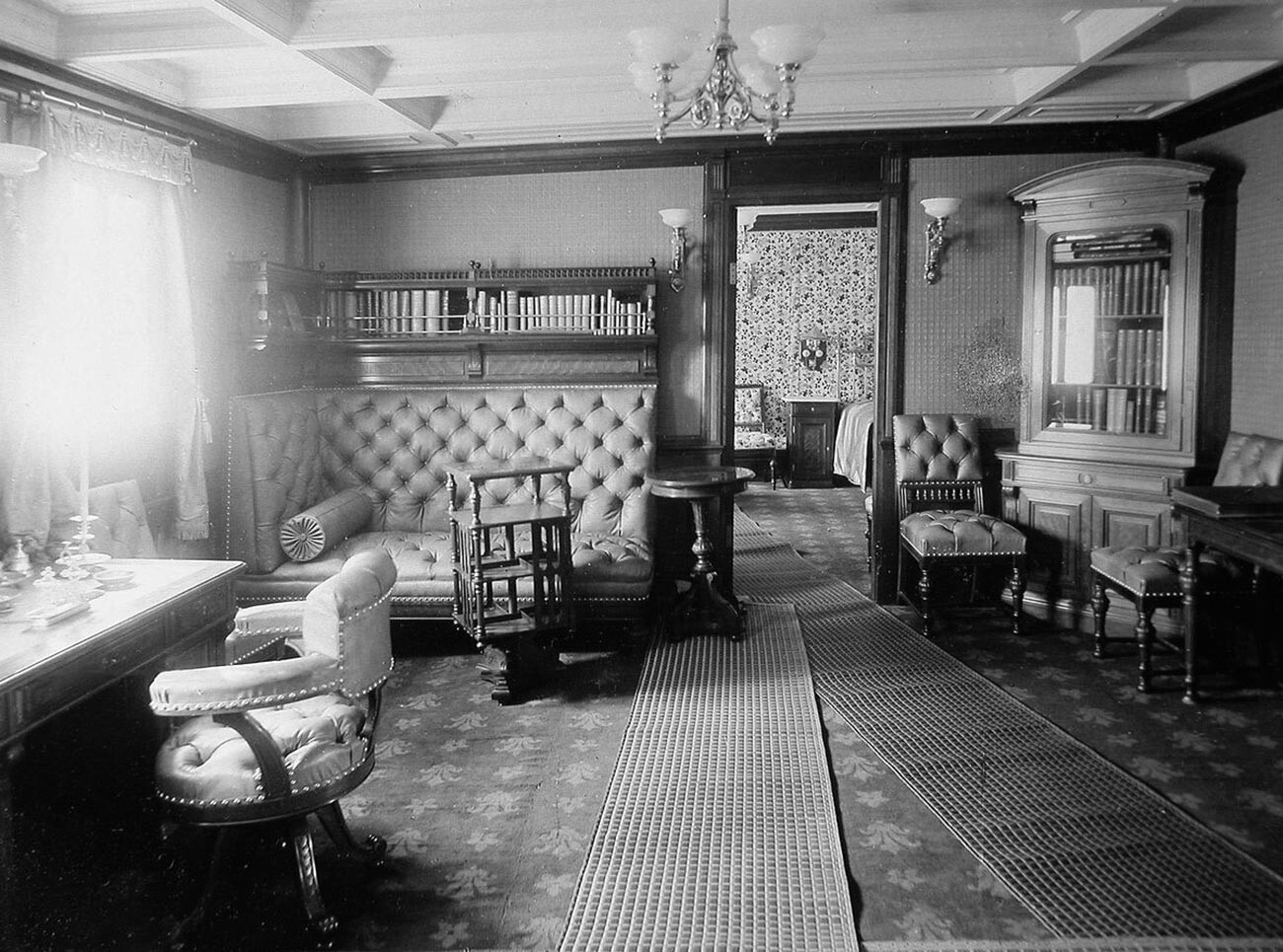
Imperial Yacht Standart
All of that was, of course, perfect for welcoming the most esteemed guests onboard: a Siamese King, a German Emperor and a French President were all visitors at one point. However, the yacht was just as likely to be used for family outings. Nicholas and his family loved to vacation from June to early August, usually on the Finnish islands. They would live on the yacht and only set foot on land for relaxing walks.
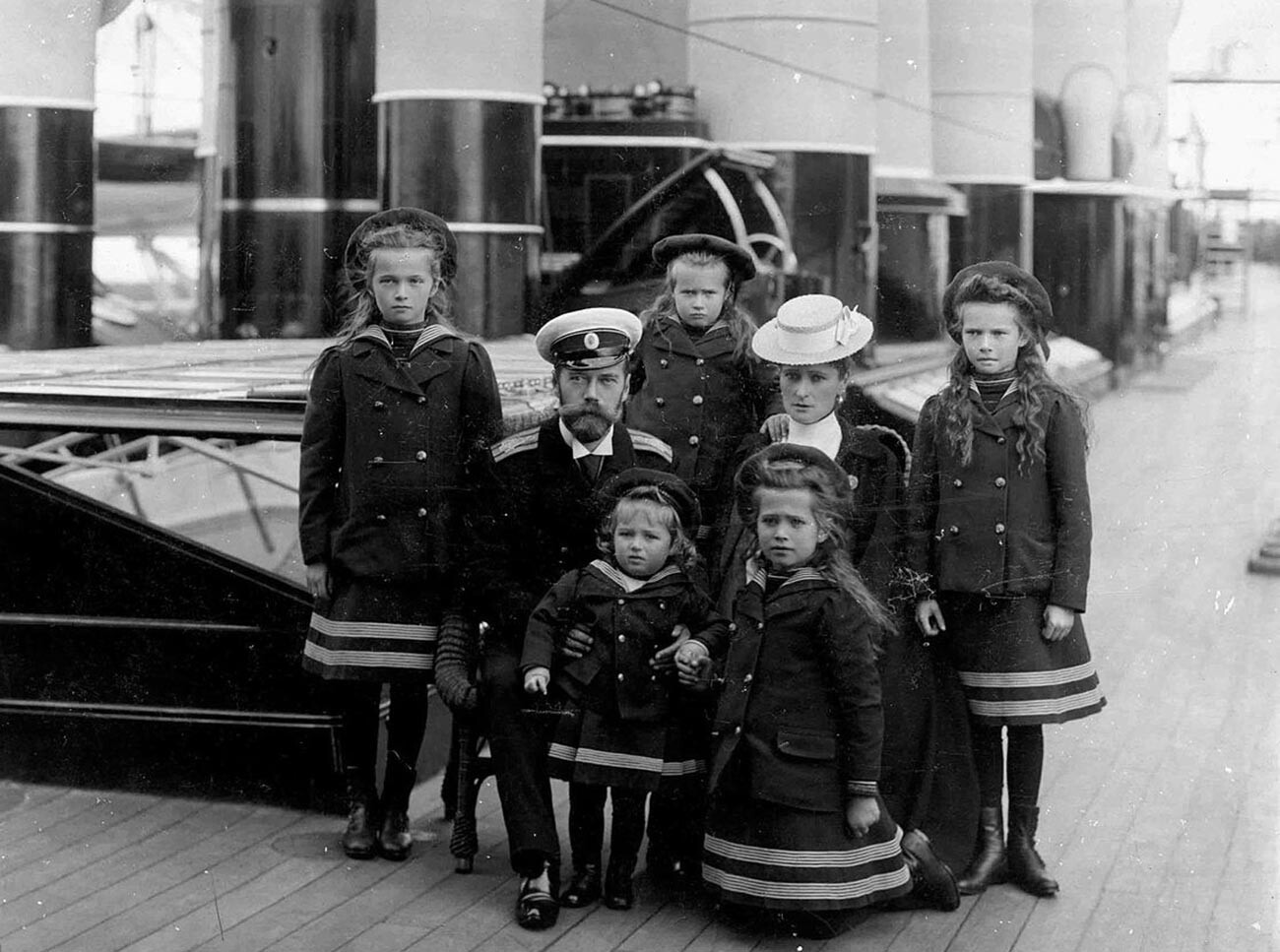
The Russian Imperial Family aboard the Imperial yacht Standart.
World War I put an end to those walks and yacht trips, for security reasons. In 1917, the tsar-cruiser became the site of a sailor rebellion - just as other vessels at the time, and already in April, the Baltic Fleet’s Revolutionary Committee took up residence in it.

All of the metamorphoses that had taken place henceforth aboard the yacht did not exhibit even a trace of its former elitist flair. The ship was repurposed into a minelayer, then used in battle. After the war, the vessel served as a barracks on water and, from 1961, as target practice for missiles. By the end of the 1960s, it bore the unglamorous fate of being taken apart for parts and scrap metal.
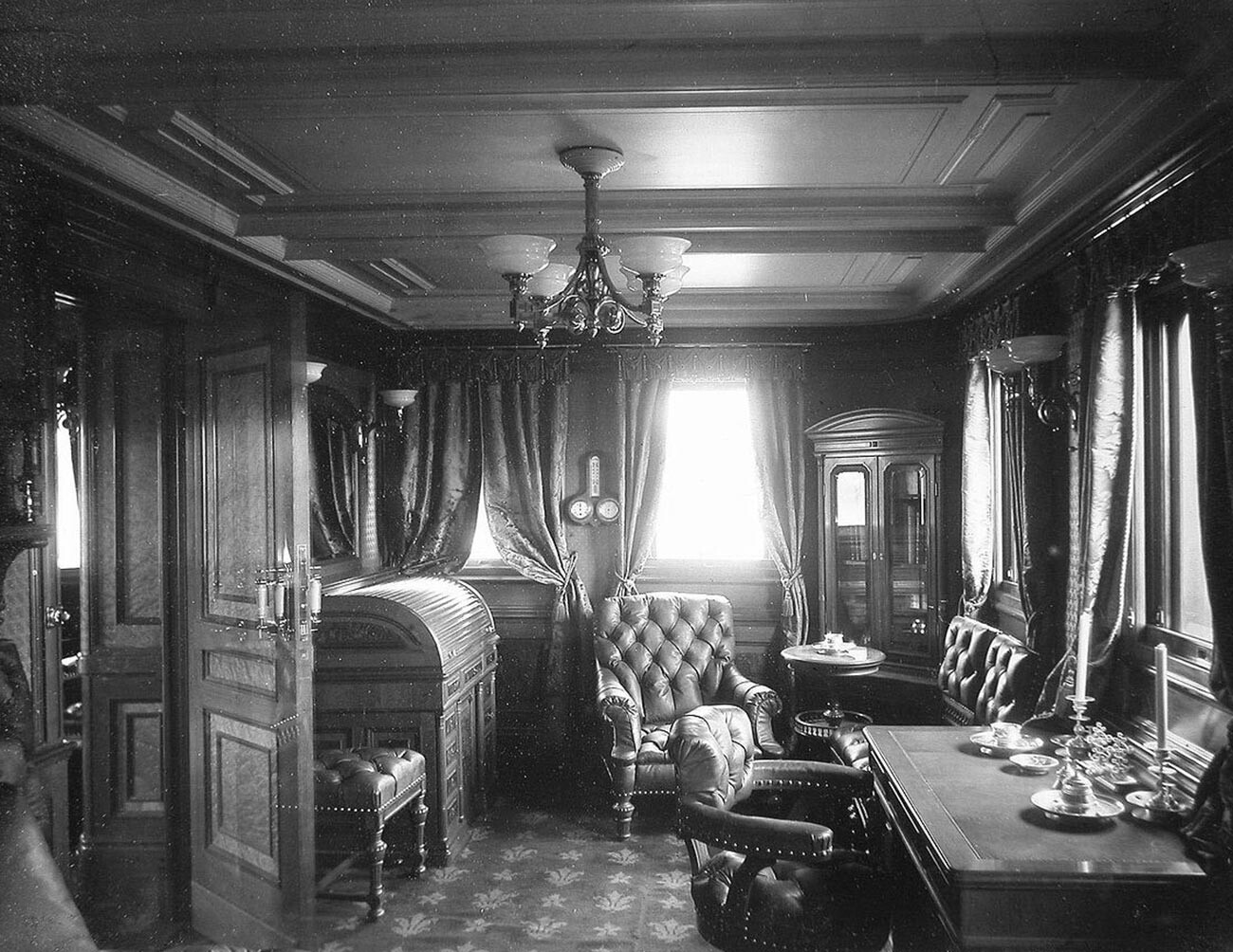
‘Polar Star’
The ‘Polar Star’ appeared in the Royal family earlier than the ‘Standart’, in 1888. Its construction was also that of a cruiser yacht, with four 47-millimeter cannons on board.
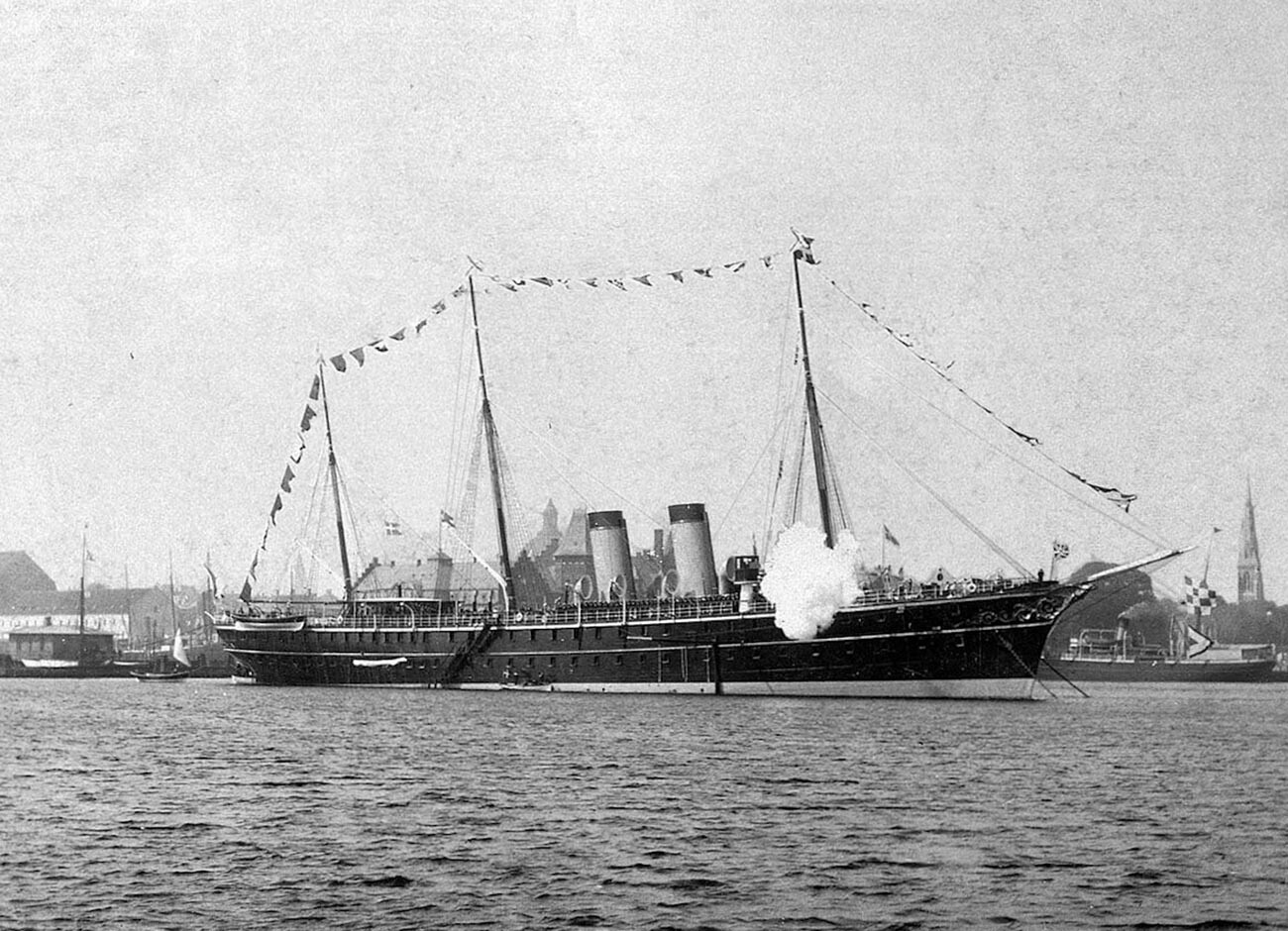
Imperial Russian yacht Polyarnaya Zvezda in Copenhagen.
The cruiser served the Romanovs until 1914 and used to take the tsar on visits to European capitals, as well as participating in official military functions and celebrations. And, although the Polar Star was a more modest affair than the Standard, according to Count Ignatyev, “her rival”, which belonged to English Queen Alexandra of Denmark, Nicholas II’s aunt, “paled in comparison”. The Polar Star housed a church and even a cowshed, with a separate cabin.
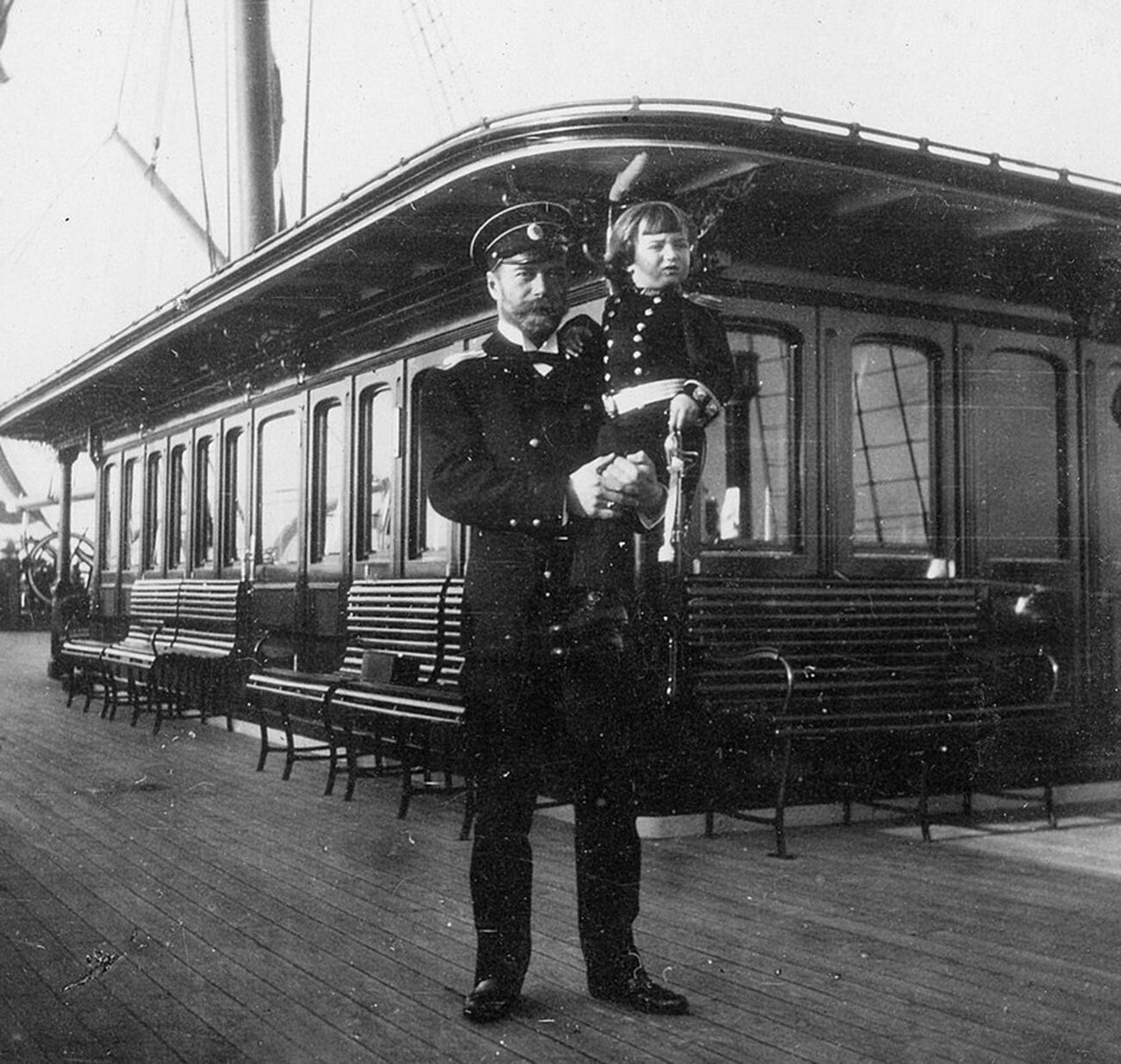
Emperor Nicholas II of Russia and Tsarevich Alexei Nikolaievich
The yacht was most frequently spotted not at official state functions, but in a small Copenhagen port, where this “dark blue beauty, fringed with a massive gold rope”, voyaged every year with Nicholas’s mother, Maria Fedorovna, aboard. The Royal family loved going shopping in Copenhagen and, although the Danish capital was only a couple of days’ travel by train, the widowed empress preferred the yacht.
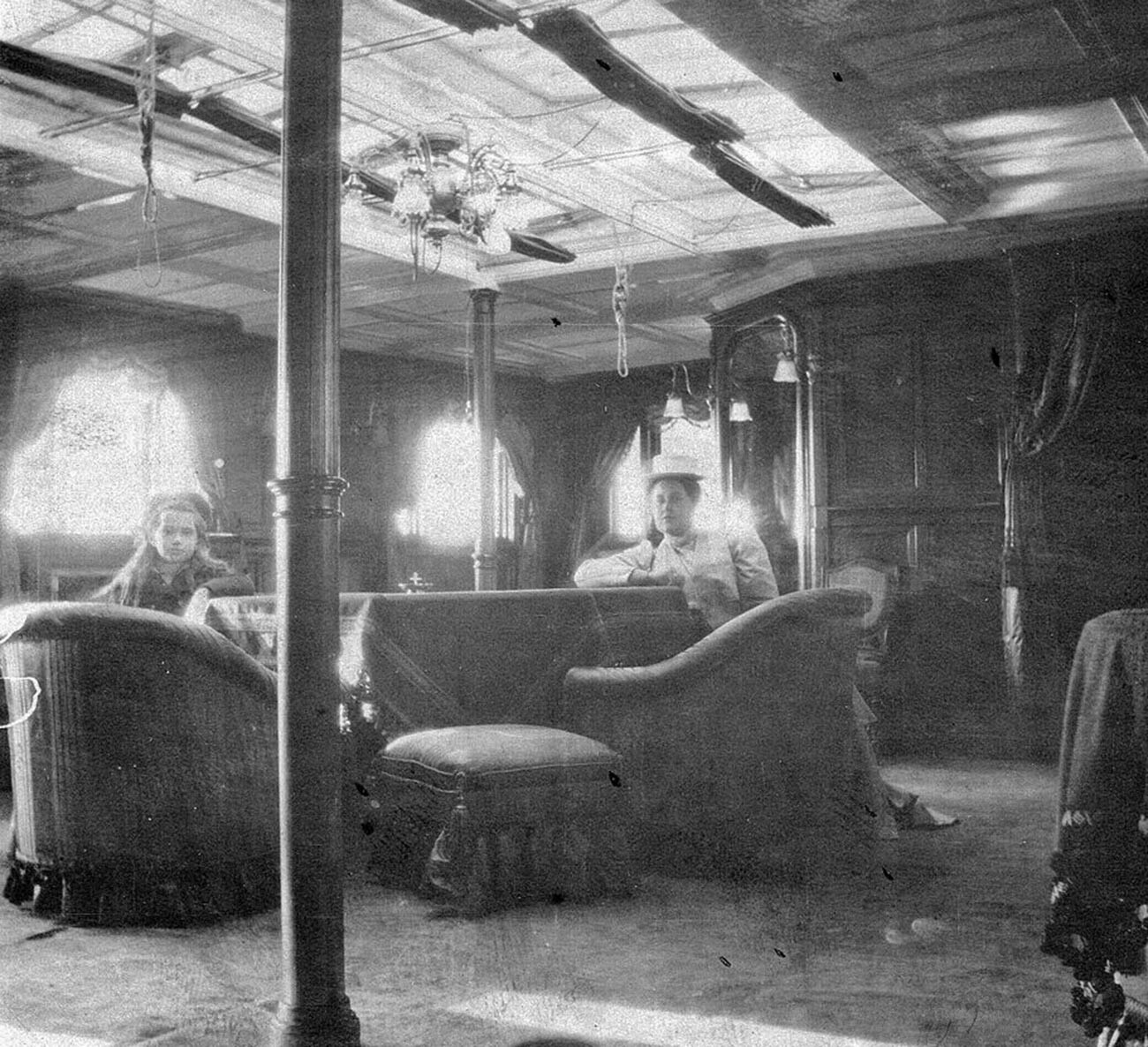
Grand Duchess Maria Nikolaevna with Anna Vyrubova in the main deck salon of the Imperial yacht Polar Star
After the Revolution, the vessel faced a similar fate to the Standart. It was first taken up by revolutionary sailors, then, before World War II, it was repurposed to serve as a submarine mothership. In 1954, the former Romanov yacht was likewise turned into a floating barracks and, seven years later - into a target for missile tests. It was finally sunk in the 1960s.

‘Svetlana’
Nicholas II’s uncle Prince Aleksey’s personal yacht, the ‘Svetlana’, was inspired by the 2nd class French armored cruiser, the ‘Catinat’, so was given to French engineers to design. It was lowered into the water in 1897.
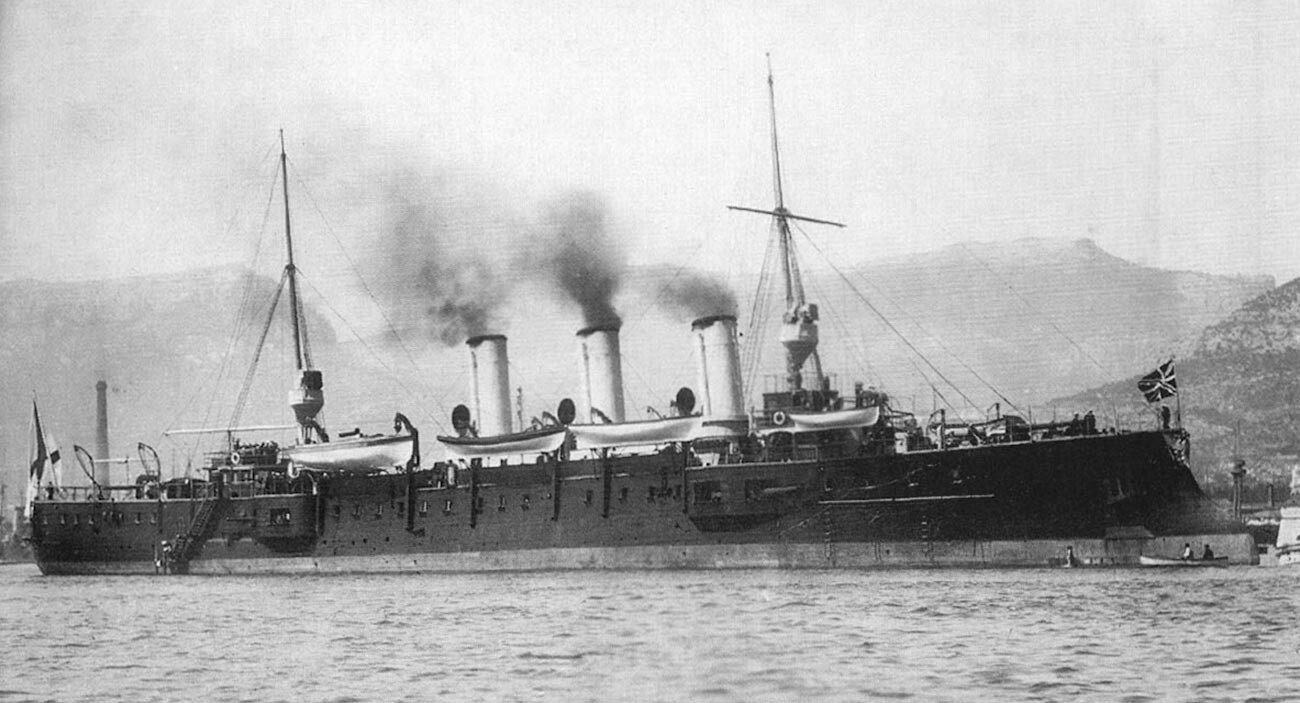
Due to the fact that the ship was first intended for Grand Duke Aleksey Aleksandrovich, it contained luxurious chambers, fashioned with expensive wood, marble and persian rugs. The Portuguese queen once took a 45-minute tour of the yacht, allegedly never hiding her amazement.
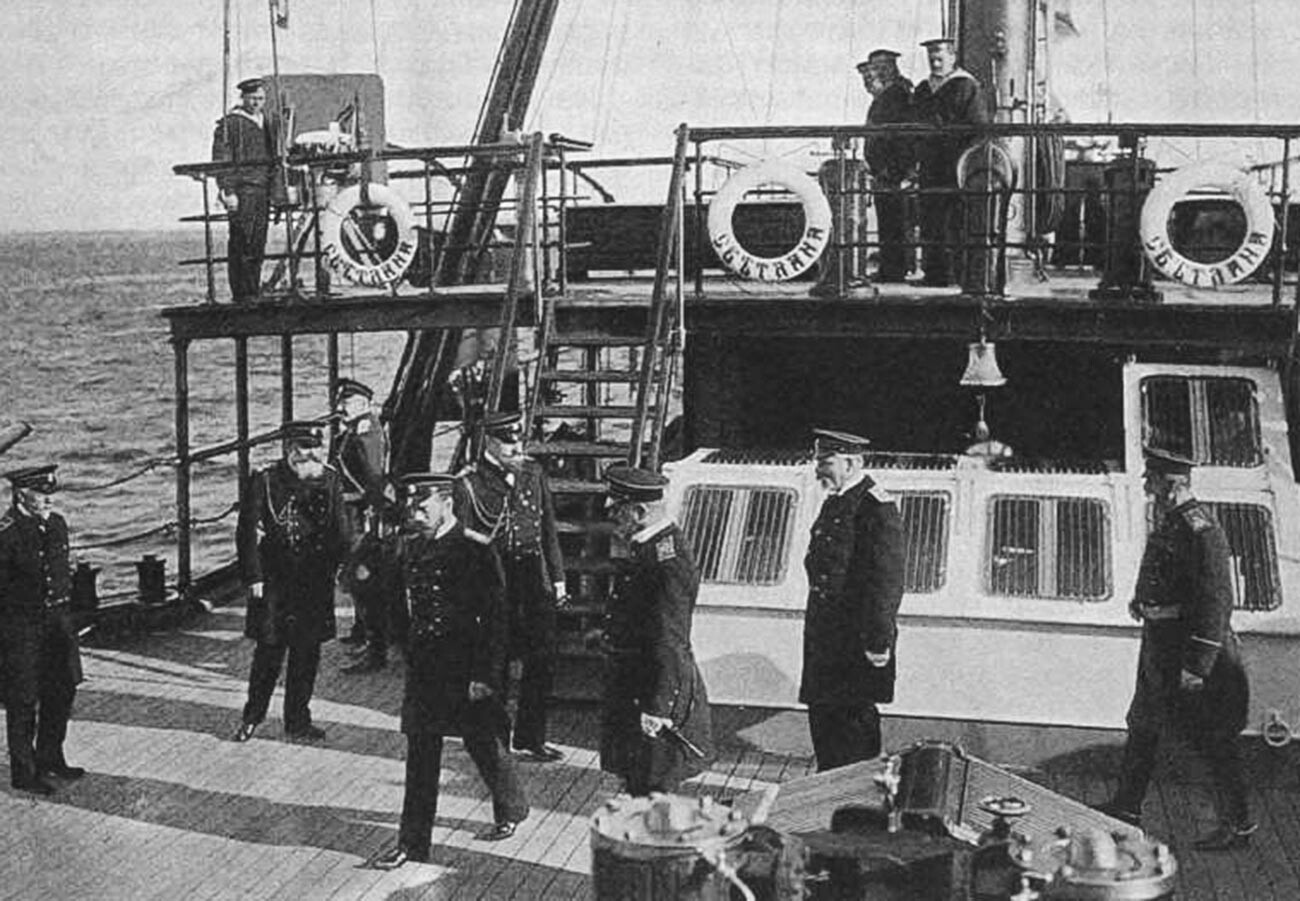
But, aside from taking the Royal family on vacations and serving as an armored minelayer and escort, the vessel also managed to take part in battle. Aside from soft couches and marble, the ship was armed to the teeth: in 1904, it was included in Russia’s Pacific Fleet and sent to fight in the Russo-Japanese War. Having received a direct shell hit during the Battle of Tsushima, the cruiser attempted to get itself to safety, but was detected and sustained heavy Japanese fire. Almost 300 sailors lost their lives. An investigative committee set up after the battle determined that the crew of the Svetlana “showed exemplary fortitude and self-sacrifice”. This appraisal was especially important to those who had survived: prior to the war, the Pacific Fleet’s sailors considered them “maids” and their ship - a “floating hotel”, instead of a fighting unit.
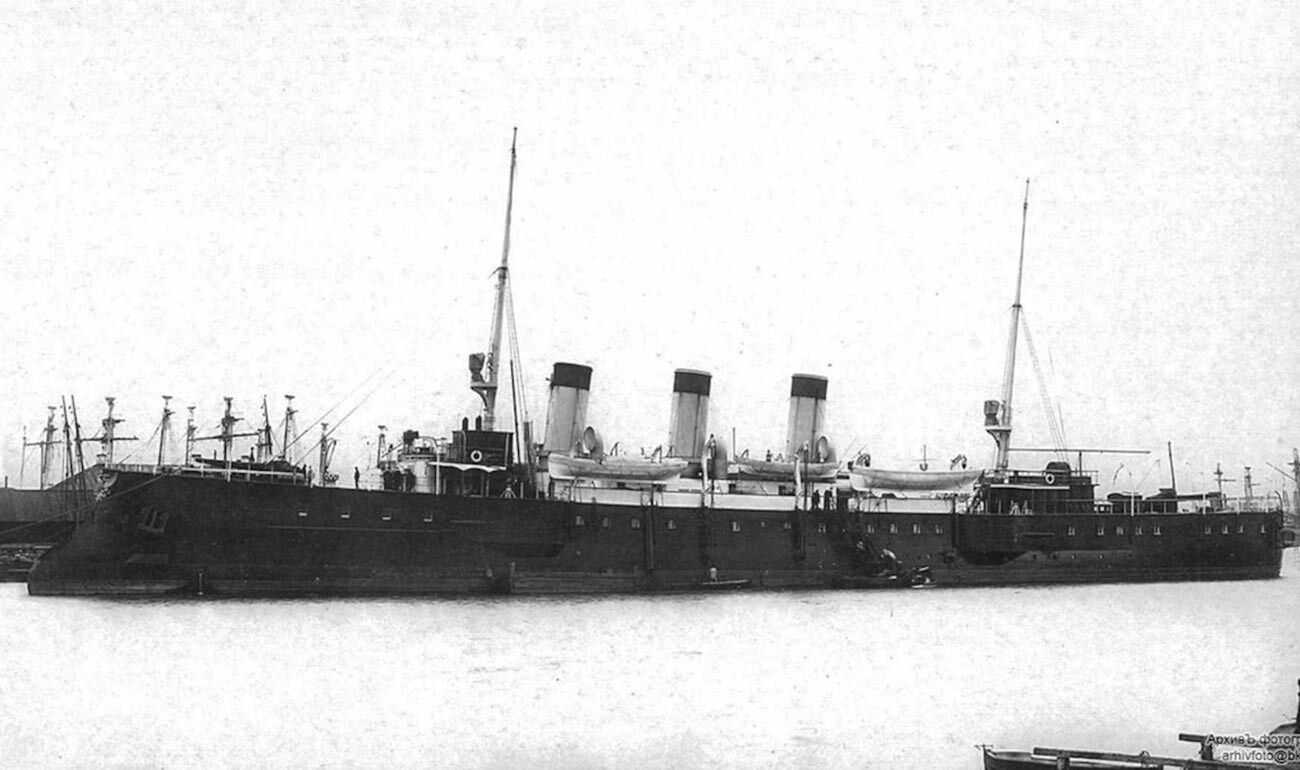
A dozen smaller yachts
The list didn’t end there. Almost every Romanov relative used to own their own cruiser. From 1905, one such vessel - the ‘Almaz’ (‘Diamond’) - acted as a double. For six long years, it would swap places with the Standart in Finland - their silhouettes were extremely similar. The security measures weren’t unfounded: there was word that, in 1907, a floating mine was spotted on approach to Kotkin Bay. The Almaz was docked in the Standart’s place that day.
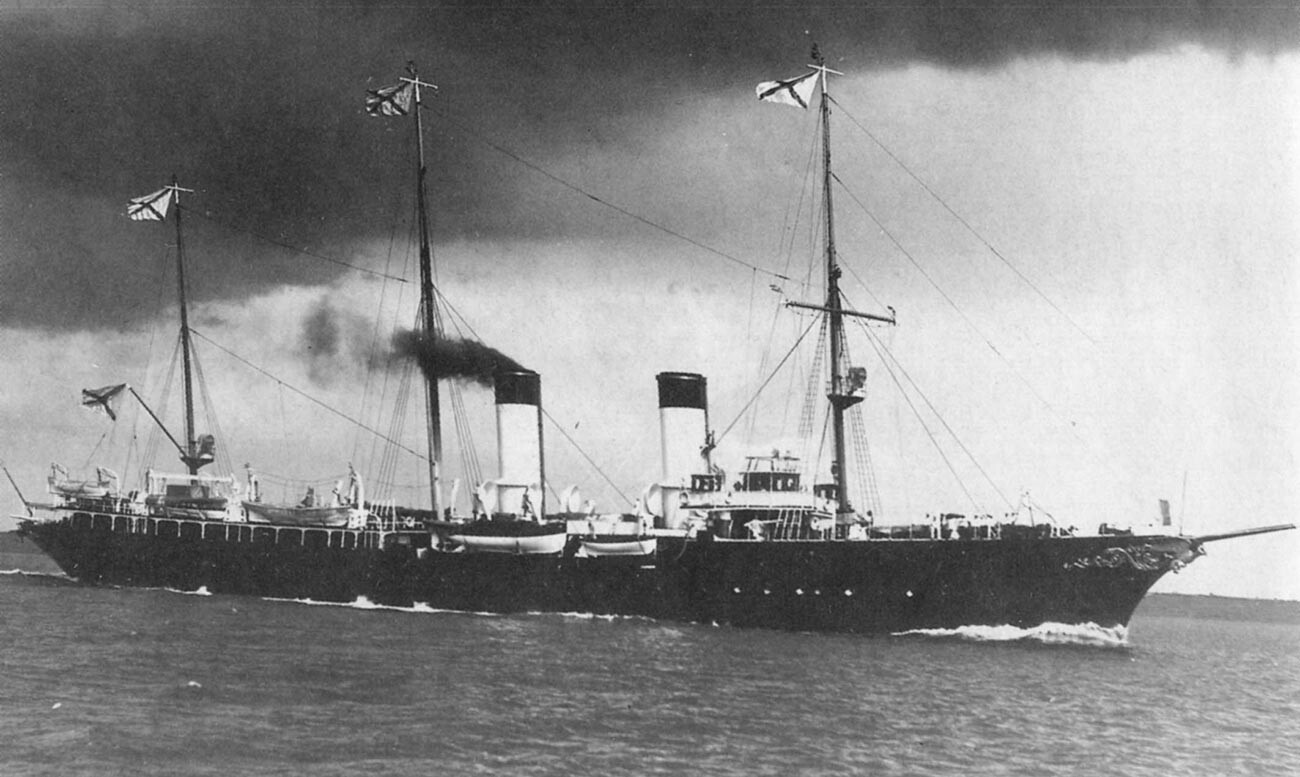
Imperial Russian cruiser Almaz.
However, aside from these humongous yachts, the Romanovs also used a dozen smaller ones: the ‘Tsarina’, ‘Aleksandria’, ‘Slavyanka’, ‘Livadia’ and others. They were used for relaxed outings around that same area and not for official state visits to Europe.
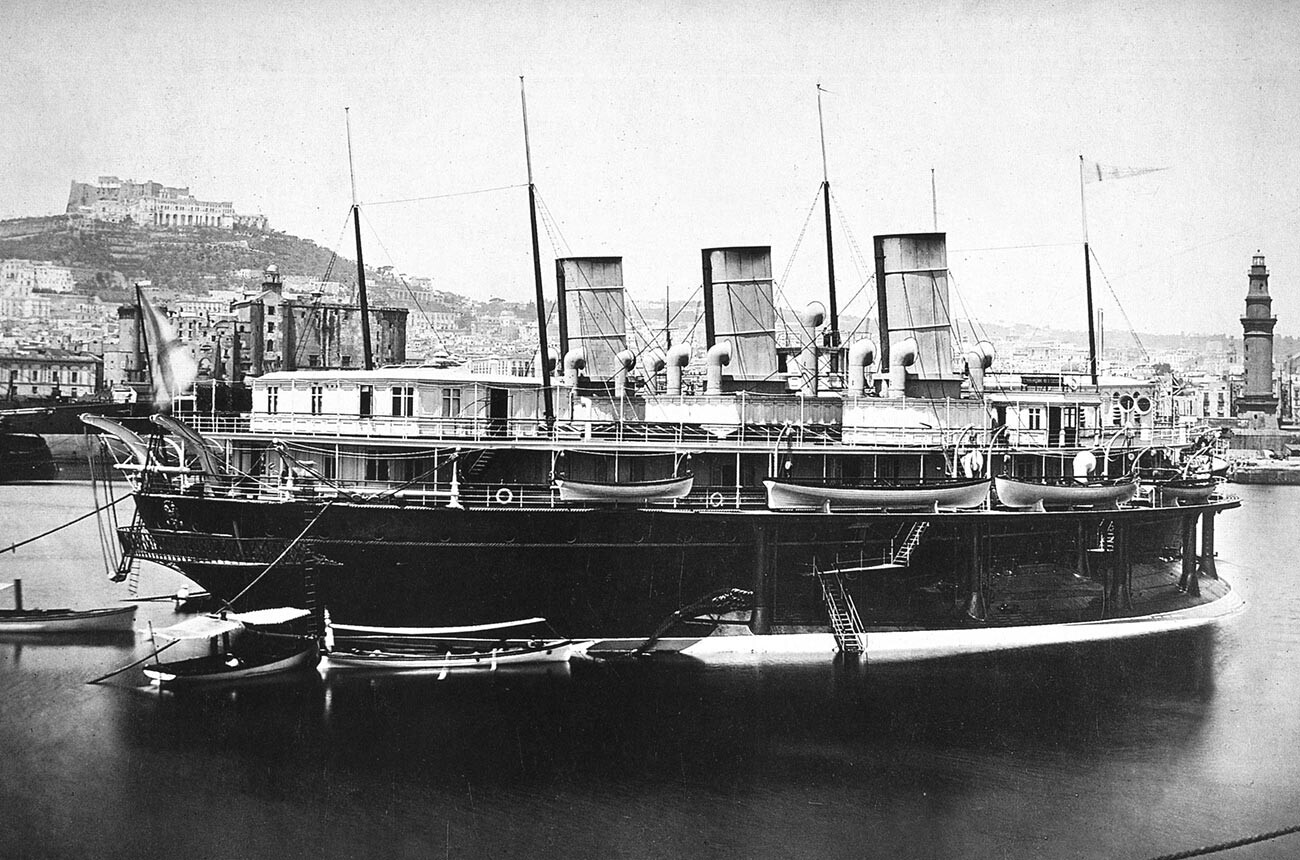
If using any of Russia Beyond's content, partly or in full, always provide an active hyperlink to the original material.
to our newsletter!
Get the week's best stories straight to your inbox
- How the Romanov jewels were smuggled out of Russia after the 1917 Revolution
- What happened to the magnificent Romanov palaces after the 1917 Revolution?
- 5 most important crowns of the Russian Empire that have survived to this day
This website uses cookies. Click here to find out more.
Nicholas II
Emperor tsar saint, 125th anniversary of the first voyage of the imperial yacht “standart”.
Posted on November 27, 2021 by Paul Gilbert
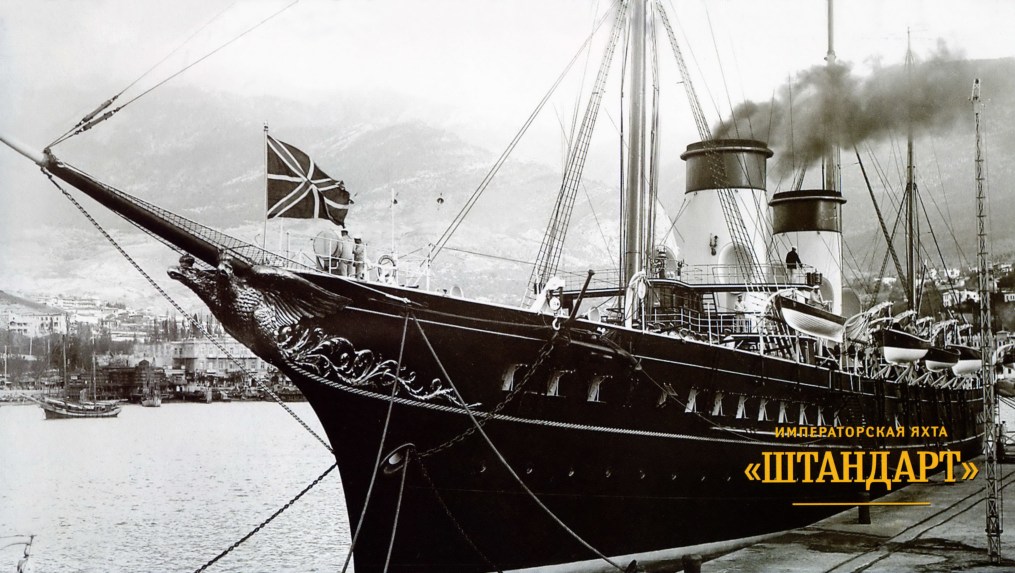
This year marks the 125th anniversary of the first voyage of the Imperial Yacht Standart [ Shtandart ].
It was on 8th September 1896 [after sea trials], that Emperor Nicholas II and Empress Alexandra Feodorovna first travelled by sea on board what many considered the “most perfect ship of her type in the world”. The Imperial couple were accompanied by their first-born child Grand Duchess Olga Nikolaevna.
The Imperial Yacht made its first long voyage to Europe stopping at Copenhagen (Denmark) – Plymouth (England) – Cherbourg (France), before returning to Kronstadt, its primary port.
The ship, built by special order at the Danish shipyard Burmeister & Wein, served the Imperial Family until 1914, when the Great War began, it was pressed into naval service. She was scrapped at Tallinn, Estonia, in 1963.
The hull of the yacht was made of riveted steel. The vessel had two decks – upper and main, as well as two platforms at the ends – fore and aft. In the middle section of the Standart , under the engine and boiler rooms, there was a second bottom, which was divided by watertight compartments.
The bow superstructure consisted of two tiers and had a navigating bridge. In the first tier of the bow superstructure, the navigator’s room and two cabins for the commanding staff were located. The second tier of the bow superstructure was the wheelhouse.
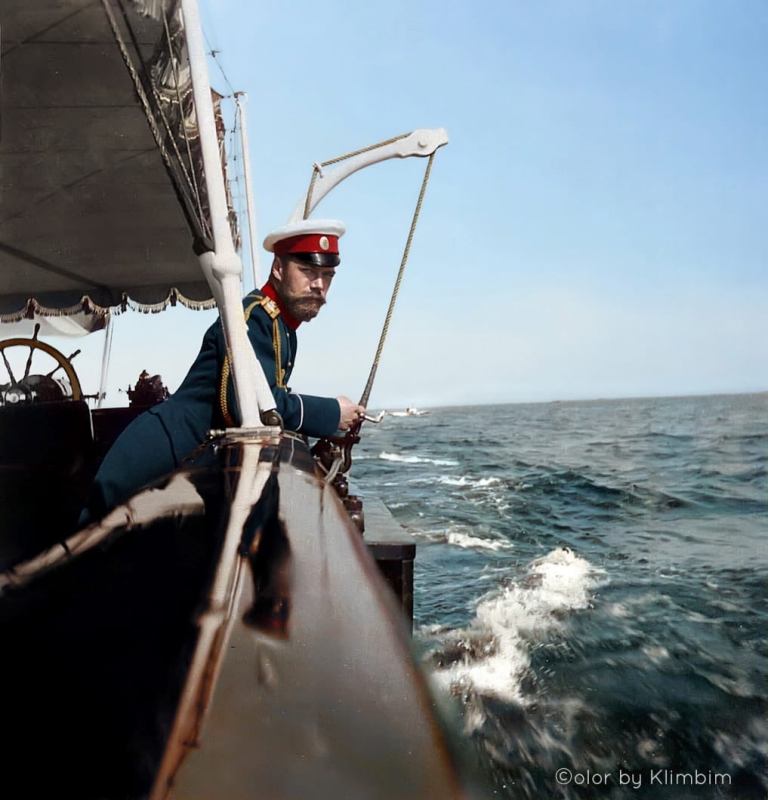
PHOTO: Emperor Nicholas II, on the deck of the Imperial Yacht ‘Standart’, colourized by Olga Shirnina [aka KLIMBIM ], who consults with Russian historians and other experts to ensure the correct colours of the uniforms worn by Emperor Nicholas II
The large aft superstructure was finished with mahogany, it housed a dining room for official receptions seating up to 70 people, a study and the emperor’s reception room. The flat upper deck was lined with American teak planks. On the main deck were the imperial apartments, which included a common living room, separate offices and separate bedrooms of the Sovereign, Empress and Dowager Empress, dining room, salon, cabins of the Heir, cabins of the Grand Duchesses, officers of the yacht and the ship’s wardroom. The bow platform housed storerooms, workshops, showers and crew quarters, below there was a cargo hold and a powder magazine. On the aft platform there were playrooms for the Imperial children, rooms for servants, a radio room, showers, and below – refrigerator chambers for perishable provisions.
The yacht’s life-saving accessories included 2 large mahogany steam boats, 2 powerboats, 2 large 14 row boats, 2 10 row boats, 2 six-oared yales and 2 8-row boats.
The yacht was powered by steam-sailing, with 24 boilers and two steam engines with an indicator capacity of 6000 hp each, which rotated two bronze screws.
The armament of the yacht consisted of 8 single-barreled 47-mm Hotchkiss cannons, which were located in the bow of the upper deck on both sides.
On the 125th anniversary marking the first voyage of the Imperial Yacht, a model was recently donated to the Monastery of the Holy Royal Martyrs Museum at Ganina Yama, near Ekaterinburg.
Other models of the Standart are on display in the Imperial Yacht Museum in Peterhof, which has a small room dedicated to the vessels; the Central Naval Museum in St. Petersburg; and at the Burmeister & Wain Museum at Copenhagen
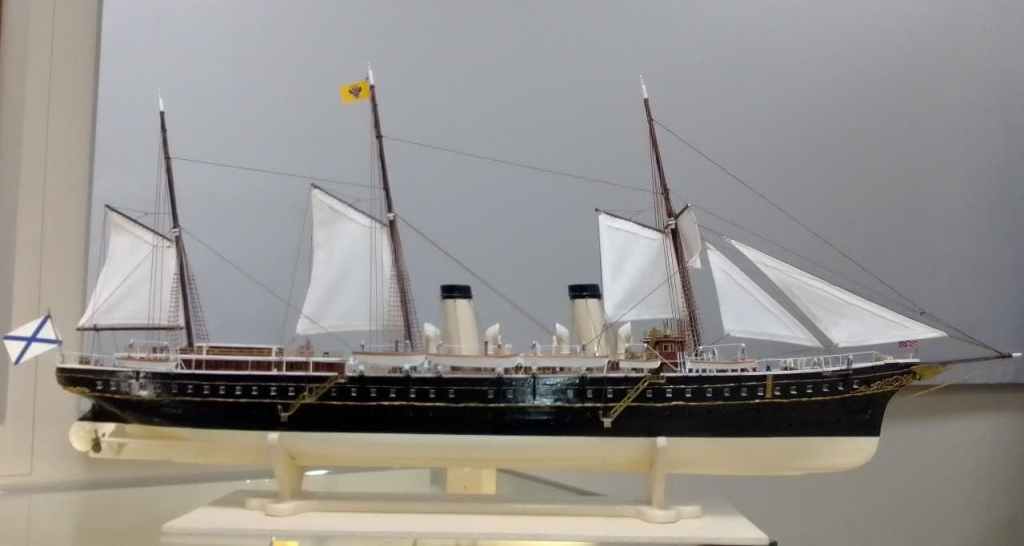
CLICK on the LINK(S) below to read more about the Imperial Yacht Standart:
Exhibition: Imperial Yacht Standart and the Family of the Last Russian Emperor + VIDEO – published on 15th December 2019
The Fates of the Russian Imperial Yachts ‘Standart’ and ‘Polar Star’ – published on 21st October 2019
‘Ten years in the Imperial Yacht Standart’ by Nikolai Sablin – published on 27th August 2019
© Paul Gilbert. 27 November 2021
Share this:

- Already have a WordPress.com account? Log in now.
- Subscribe Subscribed
- Copy shortlink
- Report this content
- View post in Reader
- Manage subscriptions
- Collapse this bar
You must be logged in to post a comment.

IMAGES
VIDEO
COMMENTS
The Standart was an Imperial Russian yacht serving Emperor Nicholas II and his family, being in her time (late 19th/early 20th century), the largest imperial yacht afloat. After the Russian Revolution, the ship was placed in drydock until 1936, when she was converted to a minelayer .
The Imperial Yacht ‘Standart’ was built by order of Emperor Alexander III, and constructed at the Danish shipyard of Burmeister & Wain,² beginning in 1893. She was launched on 21 March 1895 and came into service early September 1896. It later served Emperor Nicholas II and his family.
In 1909 Fabergé's famed jewellery firm manufactured the egg with the model of the 'Standart' yacht. This Easter present immortalized the yacht of the last Russian monarch, which he called his 'dear Standart'. It was not the first ship in the Russian navy to have been called by this glorious name.
The Standart Yacht egg is a jewelled Easter egg made under the supervision of the Russian jeweller Peter Carl Fabergé in 1909 for Tsar Nicholas II of Russia. It was presented by Nicolas II as an Easter gift to his wife, the Czarina Alexandra Fyodorovna.
The Standart was the largest and most luxurious emperor’s yacht in the world, boasting a conference room, an exquisite dining hall for official visits, separate living room, ensuite amenities...
The Standart was an Imperial Russian yacht serving Emperor Nicholas II and his family, being in her time (late 19th/early 20th century) the largest Imperial ...
The Imperial Yacht Standart (Штандартъ) was built by order of Emperor Alexander III of Russia. It was constructed at the Danish shipyard of Burmeister & Wain in Copenhagen, in the beginning of 1893. Standart was probably the most exclusive and magnificent yacht ever built.
The Standart was a superb, black-hulled 5557-ton yacht measuring 401' in length and 50' wide, making it the largest private ship in the world. She was much larger and faster than that of the other Imperial Yacht's, the Alexandria and the Polar Star reaching speeds of up to 21.18 knots.
This year marks the 125th anniversary of the first voyage of the Imperial Yacht Standart [ Shtandart ]. It was on 8th September 1896 [after sea trials], that Emperor Nicholas II and Empress Alexandra Feodorovna first travelled by sea on board what many considered the “most perfect ship of her type in the world”.
The images of the The Standart Yacht and the Family of the Last Russian Emperor, are based on memoirs and original photographs from the personal archive of N. V. Sablin, captain 2 nd rank, who served on board The Standart yacht from 1906 until 1916.